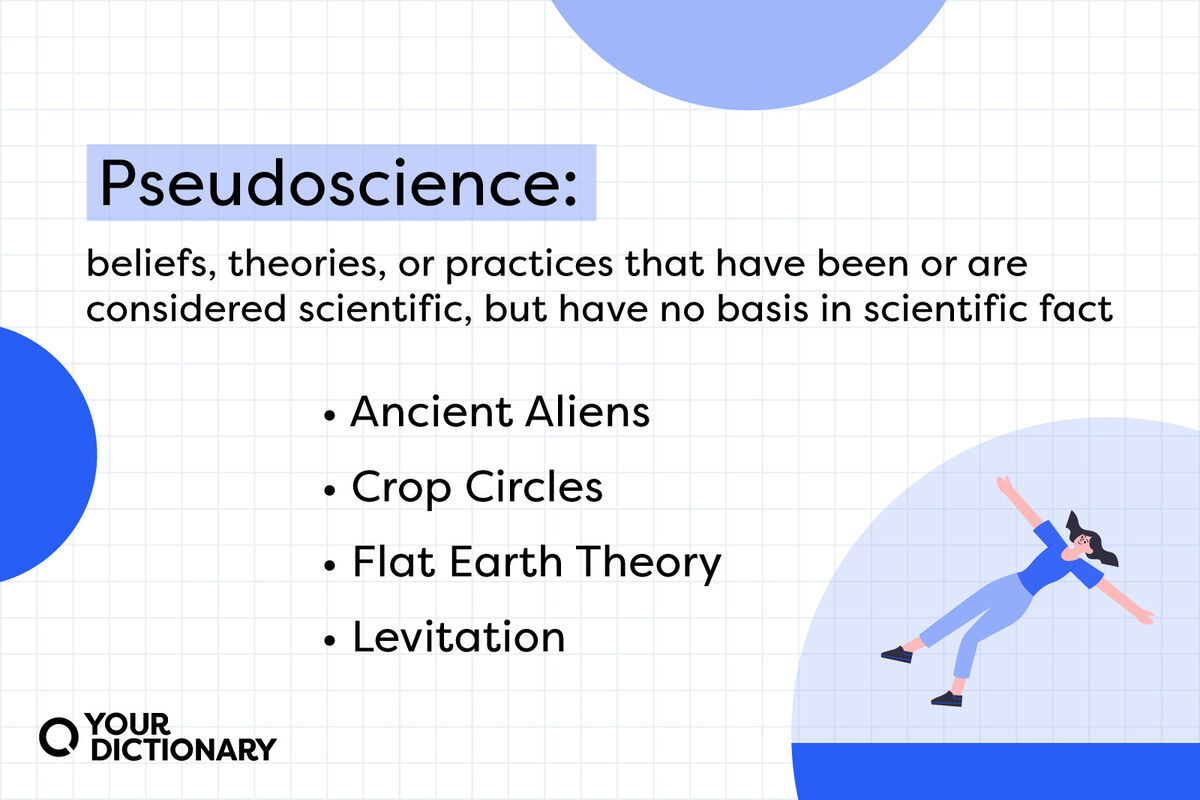
Pseudoscience includes beliefs, theories, or practices that have been or are considered scientific, but have no basis in scientific fact. This could mean they were disproved scientifically, can't be tested scientifically, or lack evidence to support them. The term generally has a negative connotation. When used, someone's insinuating the topic isn't based on scientific findings and is, therefore, lacking in truth.
A popular "science" that's often debunked (or flat out mocked) is astrology. Some people believe the earth's position around other celestial bodies has an impact on our everyday behaviors. Others find it laughable. Who's right and who's wrong? Let's explore further examples of pseudoscience.
Pseudoscience Related to Space and Astronomy
Of all the sciences, it seems astronomy findings should be rather definitive. It's a complex study where, despite the magnitude of studies, we probably haven't even scratched the surface. Let's take a look at pseudosciences that claim to have a basis in astronomy:
- 2012 Doomsday Scare - Expected that 2012 would bring large-scale disasters or even the end of the world
- Ancient Aliens - Proposes that aliens have visited Earth in the past and influenced our civilization
- Apollo Moon Landing Hoax - Contends the original moon landing was faked
- Astrology - Believes that humans are affected by the position of celestial bodies
- Crop Circles - Believes patterns that mysteriously appear on farmland are made by aliens
- Face on Mars - Posits that a rock formation on Mars resembles a face and is evidence of life there
Pseudoscience Related to the Earth
If outer space can be plagued with pseudoscientific beliefs, so can Earth. Is it round? Is it flat? Are we the only inhabitants? Have aliens made countless visits without our knowledge? Here are a few related theories:
- Bermuda Triangle - An area where unexplained events, like disappearances of ships and airplanes, have occurred
- Cryptozoology - The search for Bigfoot (Yeti), the Loch Ness monster, El Chupacabra, and other creatures that biologists believe do not exist
- Flat Earth Theory - A claim that, since Earth looks and feels flat, it must be flat and disc-shaped
- Hollow Earth Theory - A belief that the Earth is hollow, at least somewhat, and it is expanding
- Megalithic or 366 Geometry - Thanks to the Babylonians, most of us believe there are 360 degrees in a circle. However, certain areas, particularly megalithic Britain, believed a circle had 366 degrees and some still believe this to be true today.
- Mythical Creatures - The belief that fairies, elves, pixies, gnomes and other beings exist
Pseudoscience Related to the Paranormal
Everyone loves a good ghost story, right? And, what if there was a way to commune with a family member who's passed on? Paranormal activity, as a whole, is often debunked by scientists. Let's take a look at some of the particular practices that are often scoffed:
- Channeling - Communication with a spirit through a person
- Dowsing - A method of finding water, metals, or precious stones underground by using what's known as a divining rod
- Electronic Voice Phenomenon (EVP) - Used by ghost hunters to record messages from spirits
- Extrasensory Perception (ESP) - Covers several methods of gaining information, like clairvoyance, telepathy and remote viewing
- Levitation - Raising someone or something and suspending it in mid-air
- Numerology - A belief in a relationship between certain numbers and people or events
Pseudoscience Related to Psychology
In the search for personal development and understanding, people are presented with a plethora of healthy living tips and practices. No longer is seeing a therapist or psychologist enough.
Some of the practices listed below are used by legitimate and respected professionals, while others are dismissed as being based on false pretenses. Let's take a look:
- Conversion Therapy - Attempts to change a person's sexual preference from homosexual to heterosexual
- Hypnosis - A method of deep relaxation where the subject is open to suggestions
- Primal Therapy - Belief that experiences before and during birth influence the way our life unfolds
- Polygraph - A lie detector test used to determine if the subject is lying by measuring changes in some vital signs
- Psychoanalysis - Developed by Sigmund Freud, a psychiatric practice aimed at helping people overcome longstanding life difficulties
- Subliminal Advertising - Receiving data through seeing or hearing, while not being aware of receiving it
Other Pseudoscience Examples
Science creeps into every area of our lives. As such, pseudoscience tends to span everywhere, too. Let's take a look at a few miscellaneous pseudoscience examples.
- Body Language - The belief that two people send cues to one another based on their body positioning
- Dianetics - Developed by L. Ron Hubbard, a system believed to cure all mental disorders by dealing with the relationship between the mind and body
- Feng Shui - Changing spatial orientation in relation to the flow of energy in a room
- Handwriting Analysis - A belief that a person's personality can be seen through their handwriting
What's Real to You?
It's difficult to convince someone who has seen truths unfold in, say, astrology, that their belief system is based on hogwash. It's not only difficult, it may be unfair. In a world full of psychological practices (some real, some pseudo), why not let everyone try to live their best life?
In the meantime, if you start to develop any new theories or practices, perhaps you should run them through a scientific experiment. You can learn more about how to test a hypothesis and review sample scenarios in Examples of Hypothesis Testing.